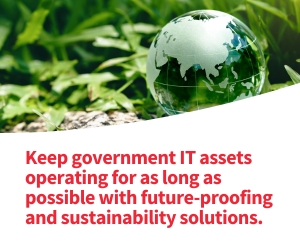Officials Can Prioritize Core Government Business
Local government leaders wear multiple hats, juggling a lot of responsibilities. In a city’s information environment, managers are responsible for technology lifecycle management and ensuring that products continue to work, without fail and at optimal levels. But officials also have responsibilities in the business of government, and they often have their hands full managing those duties.
Administering technology stacks and managing asset lifecycles is not inherently core government business and may be best passed to a managed service provider that has deep expertise in specific areas. By migrating an asset to cloud, local governments can refresh technology in support of digital transformation and also improve technology lifecycle management.
In the example of a city adding a chatbot to 311 services, local officials may leverage the capabilities of Google Cloud AI or Amazon Connect for virtual chat. That move to cloud comes with the expertise of a managed service provider, which can ease the burden.
Cloud service providers patch and update applications, run backups and restore data, and automate processes in support of government operations. They can further automate many processes, supporting technology lifecycle management.
READ MORE: State tech leaders reflect on cloud modernization.
Cloud Management Can Extend Application Capabilities
Governments must expand citizen services to meet demands and also gain operational efficiencies. Governments often are not getting all they can out of an asset today if it’s not interoperable and able to share data with other resources. On-premises legacy technology solutions often produce data silos that trap information. But moving to the cloud can bring interoperability, where applications readily hand off data across multiple processes.
Cloud migration may centralize data management of citizen records and optimize workflows, for instance, to support citizens paying taxes or renewing their driver’s licenses — two historically separate processes that could benefit from data sharing. With these data-sharing capabilities, governments also could establish integrated dashboards that inform both employees and constituents. Gaining enhanced visibility into these operations helps governments ensure their assets are fulfilling citizen service objectives.
Manufacturers continually add new capabilities to applications and produce new versions of software. Older versions then face an end-of-sale date when vendors shift sales initiatives to new iterations. Following an end-of-sale, vendors eventually will end support for legacy solutions and focus their internal resources on new assets.
Governments can remove themselves from the business of directly managing these details when they migrate to a cloud solution, relying upon the service provider to shoulder that responsibility. Instead of getting their hands dirty in the details of such maintenance, officials may instead dedicate themselves to core government business.
This article is part of StateTech’s CITizen blog series.












